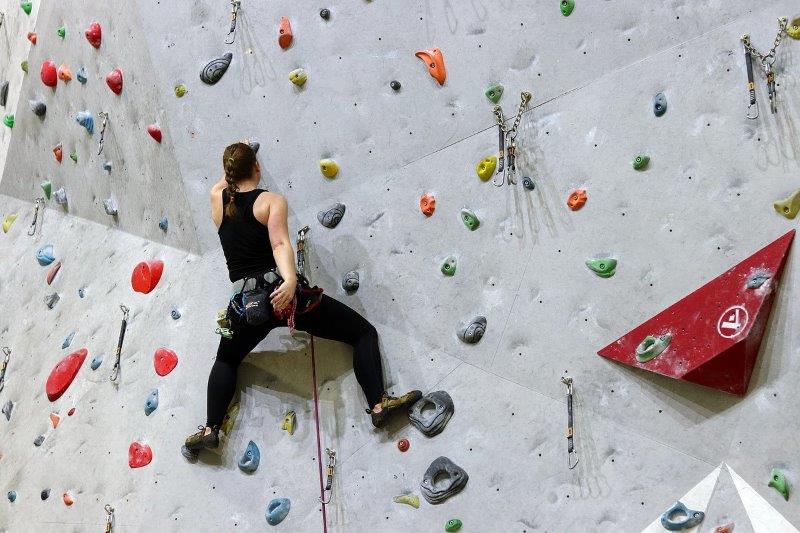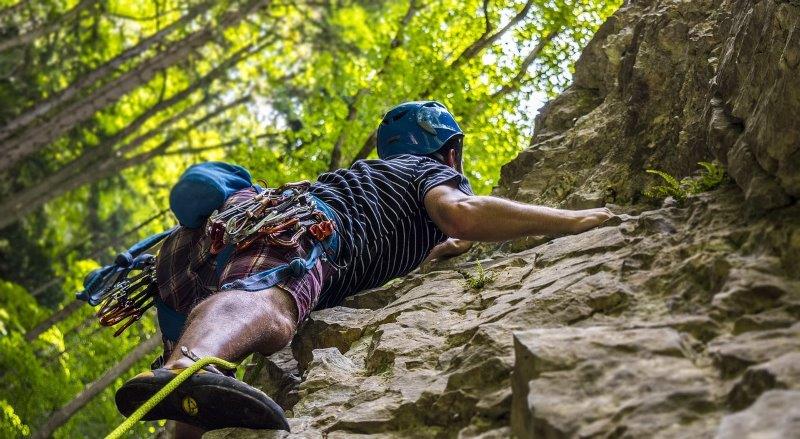How to Prevent Rock Climbing Injuries
Rock climbing is a fun and challenging sport that can provide a great workout. However, if you’re not careful, you can easily injure yourself. We’ll look at some ways to prevent rock climbing injuries and how to handle situations where you might get injured. So whether you’re a beginner or an experienced climber, keep reading for helpful tips!
Stretch Before Climbing
Stretching should be an important part of any rock climbing routine. You need flexibility and range of motion to reach holds in difficult or awkward positions, and tightness can decrease your ability to move through certain holds or speedy transitions.
Before you even think about getting up onto the rock face, take some time to warm up your body with light cardio activities such as jumping jacks, walking/jogging in place, or bodyweight exercises such as squats and lunges.
Targeted stretches such as chest openers, yoga lunges, shoulder rolls, and arm stretches are particularly helpful before embarking on your climbing journey. Many people overlook this step, but taking 5-10 minutes at the beginning can save hours of frustration down the road.
Proper stretching before each climb is key for optimizing performance and preventing injury – don’t skip it!
Learn Proper Technique
Rock climbing is often thought of as a high-stakes and dangerous activity, but in fact, it can be incredibly rewarding when done safely. Before attempting the biggest climbs, you must learn to properly use their hands, feet and arms in order to ensure safety. This means understanding the fundamental techniques of proper posture and positioning of your body weight, both on flat terrain and on inclines.

It’s also essential to build up strength in your arms, legs and core from physical exercise; something that will help when you graduate to tougher climbs. On smaller stages where technique can be honed without too much risk, you should work on your balance and flexibility, which are some of the most important climbing skills.
Partnering with an experienced climber or taking rock climbing lessons are tried and true methods of improving technique quickly by learning from someone who knows. Ultimately though, building up technique is all about training on appropriate levels – followed by gradually attempting more difficult routes. With each accomplishment comes greater satisfaction…and a desire for more challenging climbs!
Challenging yourself through rock climbing requires patience and building skill sets over time to master technique. So be patient and don’t move too fast before you are ready.
Don’t Push Injuries
In rock climbing, even the slightest of injuries can be dangerous. Absolutely any injury, whether unrelated or due to a direct cause, could turn into something much worse while engaging in this high-intensity sport. For instance, climbing with an ankle sprain or shoulder strain can actually leave you more injured than when you first arrived at the wall.

Even if the injury seems minor like soreness in your finger joints, it is advised to wait until your body has completely healed before attempting rock climbing once again. Beginning signs of finger joint pain can be due to overstraining and gripping, and without enough rest, strengthening and stretching, can lead to more serious issues like finger pulley injury.
Due to the nature of the sport; rock climbing is quite intense on your overall body from your fingers to arms to shoulders, core, hips, and feet. You need both push and pull movements to exert weight or add pressure on different limps to scale up the wall. Hence, someone with an injury simply shouldn’t further aggravate a muscle group you are trying to heal.
In order to stay safe and healthy on the wall, take all necessary precautions and do not attempt rock climbing if you even have a slight issue with your body.
Use Equipment to Improve Functional Strength
There are some simple strength and conditioning exercises that will improve your climbing capabilities and will help prevent injuries.

Hand and finger strength, in particular gripping ability, is one of the most important aspects of rock climbing. Using grip strengtheners is an easy way to quickly get better. Hangboards are another piece of equipment that can improve your gripping technique and pulling strength.
Takeaways
Rock climbing is an incredibly fun and rewarding sport, but it’s important to be aware of the risks involved. By staying cognizant of injury risk, you can take steps to prevent most injuries from happening in the first place.
Make sure you are proactive with your training, stretching, and monitoring any injuries – this will help keep you safe while rock climbing and minimize the chances of a headache down the road.

No Comments